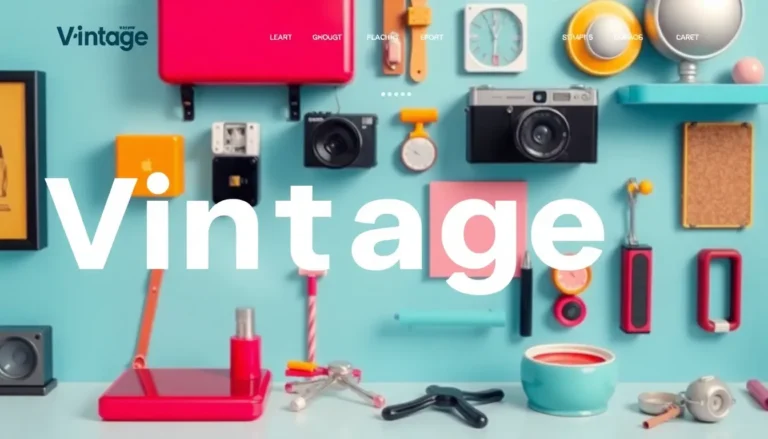In a world where creativity knows no bounds, a digital drawing pad is the magician’s wand that transforms ideas into stunning visuals. Forget about the days of messy paint splatters and sketchbook mishaps. With a digital drawing pad, artists can unleash their imagination without the risk of ruining their favorite shirt. It’s like having a limitless canvas right at their fingertips—minus the cleanup!
Table of Contents
ToggleOverview of Digital Drawing Pads
Digital drawing pads serve as essential tools for modern artists. These devices provide a workspace that mimics traditional drawing surfaces while integrating advanced technology. Artists often appreciate the versatility of a digital drawing pad, as it supports various styles, from sketching to detailed illustrations.
Many digital pads come equipped with pressure-sensitive styluses that allow for nuanced control over line thickness and opacity. Features like customizable shortcuts and layers enhance the drawing experience, making complex projects more manageable. Compatibility with design software further expands creative possibilities, making it easier for artists to share and showcase their work.
When selecting a digital drawing pad, several factors come into play. Size influences comfort and portability, while resolution affects the clarity of the artwork. Brands like Wacom, Huion, and XP-Pen frequently receive positive feedback for their user-friendly interfaces and high-quality displays.
Cost is another crucial element to consider. Affordable options exist for beginners, while professional-grade devices may offer higher functionality and durability. Investing in a reliable digital drawing pad often leads to enhanced creativity, as it provides a smooth and responsive drawing experience.
Artists find that regardless of skill level, the benefits of using a digital drawing pad transcend traditional methods. These devices support exploration of new techniques, fostering continual growth and innovation in the art community.
Overall, digital drawing pads represent a significant advancement in artistic tools, challenging the barriers of classic mediums and inviting creativity in every form.
Key Features to Consider
Selecting a digital drawing pad involves considering several critical features that directly impact the artist’s experience and creativity.
Pressure Sensitivity
Pressure sensitivity reflects how a stylus responds to varying pressure applied during drawing. Higher sensitivity levels, such as 2048 or 8192, allow for more precise line variation and shading. Artists often find the ability to create natural strokes essential for intricate detailing. This feature simulates the feeling of traditional media, enhancing the overall drawing experience and providing greater control over artistry.
Screen Size and Resolution
Screen size and resolution play crucial roles in usability and artwork quality. Common sizes range from 10 inches to 32 inches, accommodating different workspace preferences. Higher resolutions, such as 1920 x 1080 pixels or more, ensure sharper images and clearer lines. A larger, high-resolution display allows for more intricate work and reduces eye strain during prolonged sessions. Artists should consider their style and workspace to find the ideal combination.
Connectivity Options
Connectivity options determine how a digital drawing pad integrates with other devices. USB connections remain standard, while Bluetooth offers wireless convenience. Some advanced models support multiple connections simultaneously, enhancing versatility. Artists commonly choose drawing pads that connect easily to devices like laptops or tablets for maximum flexibility in their creative workflow. Evaluating these options can significantly impact the user experience.
Popular Brands and Models
Digital drawing pads come from several reputable brands, each offering unique features that cater to different artistic needs.
Wacom
Wacom stands out as a leader in the digital drawing pad market. The Cintiq line features built-in displays that allow artists to draw directly on the screen, enhancing the natural drawing experience. Pressure-sensitive styluses come standard, providing precision in line work and shading. Models like the Intuos series are renowned for their portability and affordability, making them popular among beginners and professionals alike. The customizable buttons also facilitate a smoother workflow, allowing artists to access essential tools effortlessly.
Huion
Huion offers a range of digital drawing pads that provide excellent value and features. The Kamvas line features high-resolution displays, enabling artists to capture intricate details. With a variety of sizes available, users can choose pads that fit their workspace and artistic preference. Huion’s styluses are highly regarded for their responsiveness and pressure sensitivity. Many models include additional features like tilt recognition, further enhancing the drawing experience. Artists appreciate the affordability, making Huion an appealing option for newcomers.
XP-Pen
XP-Pen is another contender known for its impressive features and competitive pricing. The Artist series includes models with vibrant displays and advanced color accuracy, which attract both hobbyists and professional artists. Pressure sensitivity in XP-Pen’s styluses supports fine-tuned control essential for detailed artwork. Furthermore, many models include customizable shortcut keys, streamlining tasks for greater efficiency. Users frequently highlight the compatibility of XP-Pen devices with various software, increasing their versatility across diverse artistic platforms.
Pros and Cons of Using a Digital Drawing Pad
Digital drawing pads offer a range of benefits that enhance the artistic process. One key advantage includes the ability to undo mistakes instantly, allowing artists to refine their work without starting over. Pressure sensitivity in styluses promotes natural hand movements, resulting in more expressive lines and shading. Many artists appreciate portability, as digital pads provide a lightweight and compact solution for creating art anywhere.
Customization features also contribute to a personalized drawing experience. Artists can set up shortcuts for tools and functions, streamlining their workflow significantly. Compatibility with various software programs expands creative possibilities, accommodating styles ranging from graphic design to traditional illustration.
On the other hand, some disadvantages exist. Initial costs can be high, particularly for professional-grade models, potentially limiting access for beginners. A learning curve often accompanies transitioning from traditional to digital mediums, which may frustrate some artists. Additionally, reliance on power sources can hinder usage in locations without access to electricity.
Screen glare represents another challenge, impacting visibility during drawing sessions. While some models offer anti-glare surfaces, not all pads effectively minimize this issue. Frequent software updates might also require adjustments, which can disrupt an artist’s routine or creative flow.
Conclusion
Digital drawing pads represent a transformative tool for artists seeking to elevate their craft. They blend the best of traditional and modern techniques, offering an unparalleled experience that encourages creativity. With features designed to enhance usability and precision, these devices cater to a wide range of artistic styles.
As technology continues to evolve, digital drawing pads are becoming increasingly accessible, making them an essential investment for both budding and seasoned artists. By understanding the key features and selecting the right model, artists can unlock their full potential and create stunning works of art. Embracing this digital medium opens up new avenues for expression, ensuring that creativity knows no bounds.




